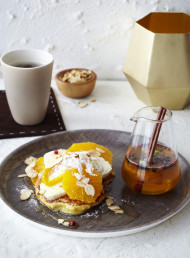How to: make ricotta
Photography by Manja Wachsmuch.

Ricotta is one of the most popular traditional fresh cheeses of Italy, where it has been made for centuries. Used in sweet and savoury dishes, this versatile ingredient can be made in a few simple steps, as cheese maker Katherine Mowbray demonstrates.
Ricotta is a fresh, light cheese and a staple in Italian cooking. It is used in cooked dishes such as baking and pasta and is a welcome addition to cheese plates, salads or served with fruit and honey.
Katherine Mowbray has taught cheese making since 1991 and has noticed a rise in the number of people who want to make fresh cheeses at home. “In the past 10 years it’s really changed,” she says. “More and more people want to know where their food comes from and want to grow it and make it themselves.”
A benefit of homemade ricotta – apart from enjoying the freshness and the satisfaction of having made it yourself – is one of economy. With a few simple ingredients it’s very cost effective. “If you buy ricotta it’s between $17 and $25 a kilogram, depending on the brand. Whereas homemade ricotta, from two litres milk (I use a non-homogenised Meadow Fresh Farmhouse Milk) at around $5 a litre, you get about 300 grams, which works out to be about $16 a kilogram.”
“Homemade cheese is also great to take to a party,” Katherine laughs. “And once you’ve made it you can make something delicious with it.”
‘Ricotta’ means re-cooked in Italian, and is traditionally made from the whey left over from making another cheese. Ricotta can also be made from milk, whole or skim, and either cow, goat or sheep milk.
The type of main ingredient not only affects the taste of the ricotta but also the texture. Ricotta made from whey is much lighter in texture than that made from whole or skim milk, which yields curd more dense in texture. Whole milk will give a higher yield than skim milk and skim milk will give a higher yield than whey.
Whatever it is made from, ricotta tastes and smells like the milk from which it is made so use the best and freshest you can find.
Ricotta curds form by coagulating the proteins in the milk or whey by heating and adding an acid. Katherine likens the process to boiling an egg. “The white of an egg, before you cook it is clear. Once it has been cooked it becomes white and solid. The longer you cook it the firmer the white becomes – that’s the protein.”
Although the basic principle of making ricotta is simple, there is also an element of craft involved – a matter of familiarity with the texture and look of the curd as it heats – similar to making bread and the understanding of the state of the dough as it is kneaded.
You will need
• Two stainless steel saucepans, one that fits inside the other to make a water bath, and large eough to stir the milk in. Or a single heavy bottom saucepan.
• Thermometer
• Measuring spoons
• Measuring cups
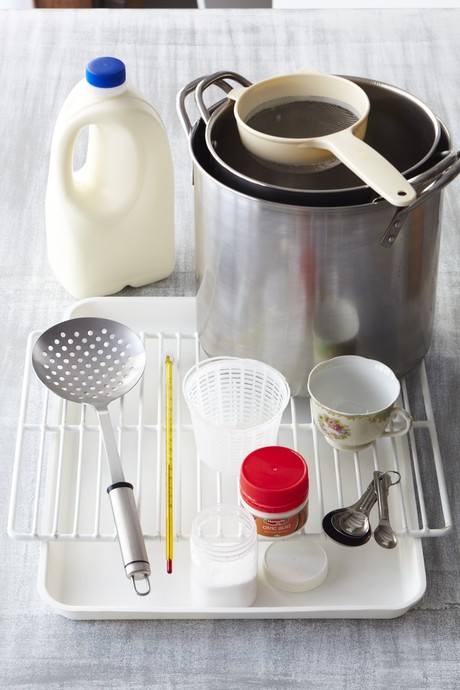
Ricotta
2 litres whole milk
1 teaspoon citric acid dissolved
in ½ cup cold water
½ teaspoon salt
step 1Heat the milk in a stainless steel pot over a water bath, or on a low to medium heat in a single pot. The temperature should not get high enough that the milk ever reaches a boil. Stir to prevent scorching.
step 2 As the milk warms add half of
the citric acid solution (¼ cup) followed by the salt.
step 3 Hold the thermometer in the milk to constantly monitor the temperature. Stir gently to keep the milk moving. The milk will heat faster if it’s moving and not just heating at the edges of the pot.
After about 10 minutes, at about 70-75°C, the milk will begin thickening on the surface as delicate ‘curdings’ begin to form.
step 4 At about 80-85°C add more of the citric acid solution, one tablespoon at a time. A separation will occur as the whey turns yellow and the white curds continue to form. It’s important not to add too much citric acid solution as it will make the ricotta rubbery, so wait and observe before adding more as you may not need to use it all. Stir gently and not too frequently so that the ricotta does not sink to the bottom of the pot and burn.
step 5 Continue to heat to 85-90°C. The ricotta curds will now form into larger pieces on the surface and separate from the whey. Turn the heat right down to allow the curds to firm up.
steps 6-7 Scoop the curds out of the pot with a sieve, place in a ricotta basket and set on a rack over a tray to drain. Alternatively place a sieve or colander over a bowl, draped with a fine muslin cloth and scoop the curds into the sieve to drain.
Let the cheese drain for any where from
10 minutes to an hour, depending on whether you want soft or firmer ricotta. The longer it drains the firmer the ricotta will be.
to serve Turn the mould on to a plate to serve. Add flavouring such as fresh herbs if desired. Refrigerate and use within 7 days.
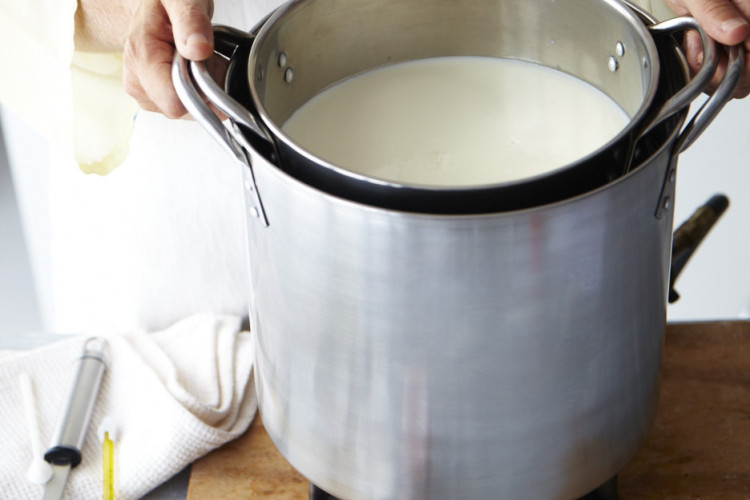
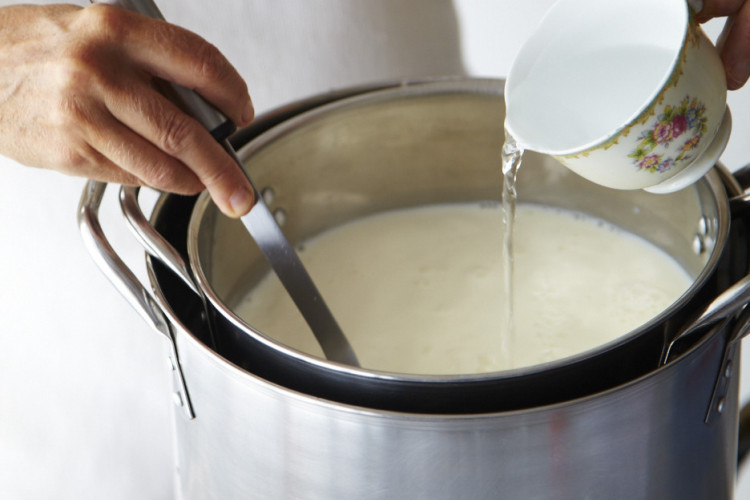

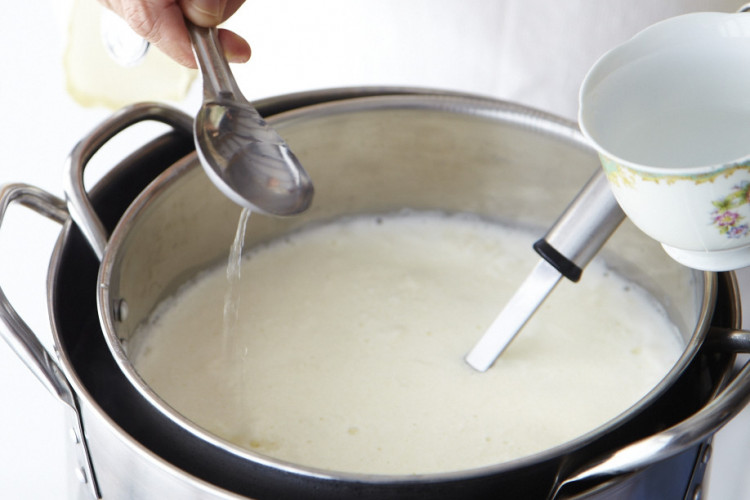
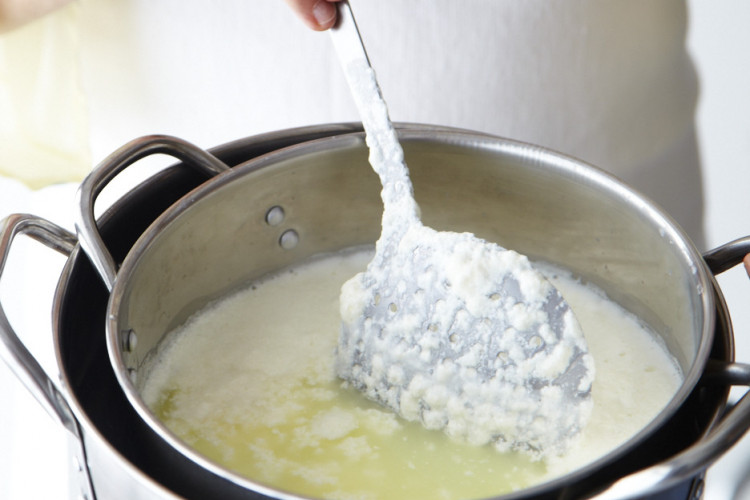
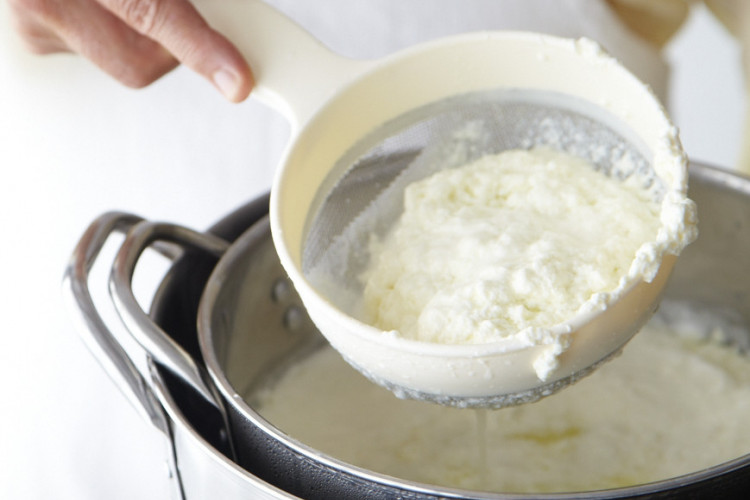
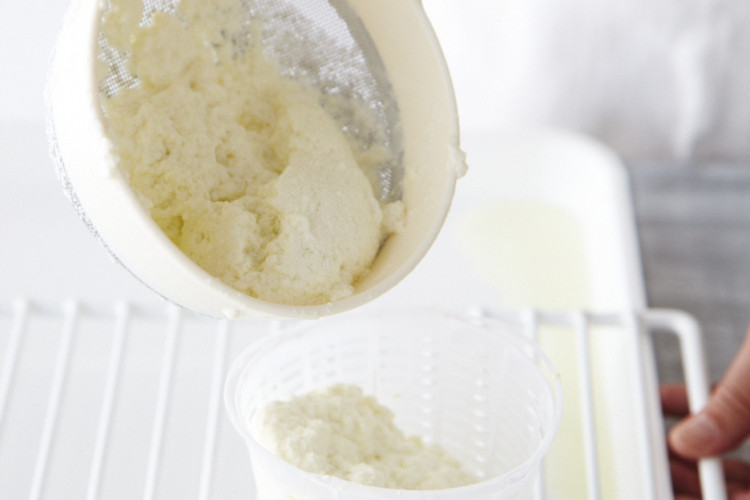
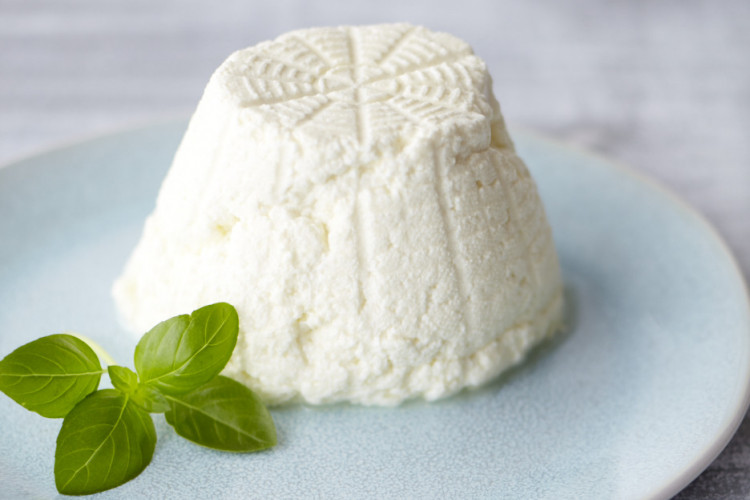
Tips
• Bacteria likes to grow in milk so be very careful about hygiene. Sterilise equipment either with sterilising tablets (as used for baby bottles) or in boiling water.
• Anything that will go into the milk needs to be kept clean to prevent bacteria incubating. Keep the thermometer and ladle on a plate or clean tray rather than placing them on the kitchen bench.
• Lemon juice or vinegar can be used as the acid, but Katherine prefers citric acid for its consistency.
• Slotted metal ladle (metal doesn’t hold bacteria as wood does)
• Sieve
• Plastic ricotta basket (these can be bought or often found in tubs of good quality mozzarella)
• Rack and tray for draining. If you don’t have a ricotta basket then use a sieve or colander draped in cheesecloth or fine muslin over a bowl.

Katherine Mowbray is an Auckland cheese maker and has taught cheese making for 20 years. Visit her website www.cheesemaking.co.nz for details of upcoming classes or to book a corporate or special event workshop.
latest issue:
HOLIDAY
dish HOLIDAY is your go-to magazine for summer entertainment. Chock-full of recipes to share in the warmer weather dish HOLIDAY is a one-off special edition, designed for the beach, bach, boat or back yard. Different than a regular issue of dish, it is dedicated to making the most of warm-weather leisure time, including barbecue and salad recipes, Spotify playlists, a beach read, crosswords and puzzles, fish and chip and ice cream guides and much more.
This issue is not part of the 12-month subscription and is available only at retail in Aotearoa New Zealand.

